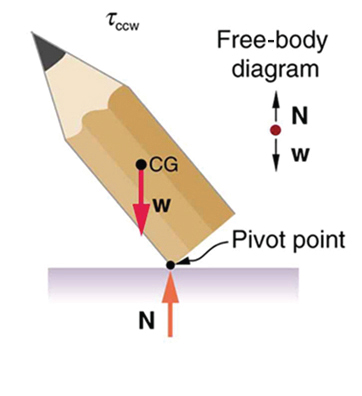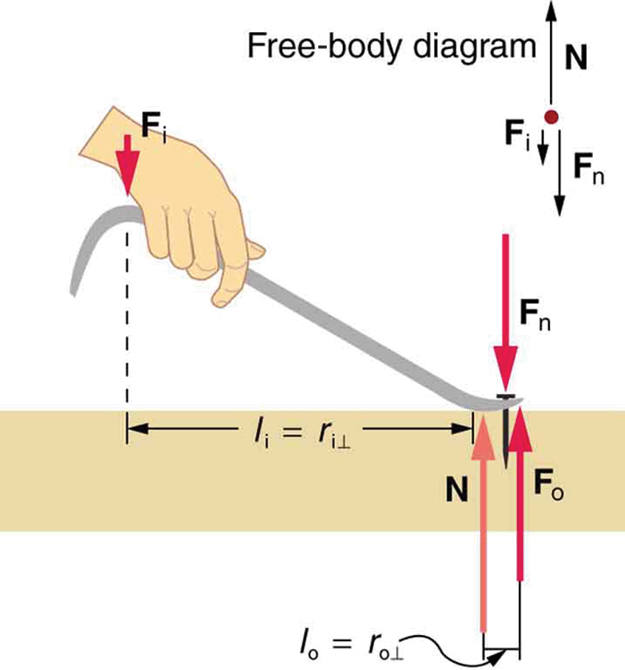Chapter 8: Angular Kinetics
Conceptual Questions
8.1 Static Equilibrium Revisited
- What can you say about the velocity of a moving body that is in dynamic equilibrium? Draw a sketch of such a body using clearly labeled arrows to represent all external forces on the body.
- Under what conditions can a rotating body be in equilibrium? Give an example.
8.2 Torque
- What three factors affect the torque created by a force relative to a specific pivot point?
- A wrecking ball is being used to knock down a building. One tall unsupported concrete wall remains standing. If the wrecking ball hits the wall near the top, is the wall more likely to fall over by rotating at its base or by falling straight down? Explain your answer. How is it most likely to fall if it is struck with the same force at its base? Note that this depends on how firmly the wall is attached at its base.
- Mechanics sometimes put a length of pipe over the handle of a wrench when trying to remove a very tight bolt. How does this help? (It is also hazardous since it can break the bolt.)
8.3 Stability
- A round pencil lying on its side as in the figure is in neutral equilibrium relative to displacements perpendicular to its length. What is its stability relative to displacements parallel to its length?

- Explain the need for tall towers on a suspension bridge to ensure stable equilibrium.
8.4 Applications of Statics, Including Problem-Solving Strategies
- When visiting some countries, you may see a person balancing a load on the head. Explain why the center of mass of the load needs to be directly above the person’s neck vertebrae.
8.5 Simple Machines
- Scissors are like a double-lever system. Which of the simple machines in the figures below is most analogous to scissors?
 (1);
(1);  (2)
(2) - Suppose you pull a nail at a constant rate using a nail puller as shown in figure (1) above. Is the nail puller in equilibrium? What if you pull the nail with some acceleration – is the nail puller in equilibrium then? In which case is the force applied to the nail puller larger and why?
- Why are the forces exerted on the outside world by the limbs of our bodies usually much smaller than the forces exerted by muscles inside the body?
- Explain why the forces in our joints are several times larger than the forces we exert on the outside world with our limbs. Can these forces be even greater than muscle forces (see previous Question)?
8.6 Forces and Torques in Muscles and Joints
- Why are the forces exerted on the outside world by the limbs of our bodies usually much smaller than the forces exerted by muscles inside the body?
- Explain why the forces in our joints are several times larger than the forces we exert on the outside world with our limbs. Can these forces be even greater than muscle forces?
- Certain types of dinosaurs were bipedal (walked on two legs). What is a good reason that these creatures invariably had long tails if they had long necks?
- Swimmers and athletes during competition need to go through certain postures at the beginning of the race. Consider the balance of the person and why start-offs are so important for races.
- If the maximum force the biceps muscle can exert is 1000 N, can we pick up an object that weighs 1000 N? Explain your answer.
- Suppose the biceps muscle was attached through tendons to the upper arm close to the elbow and the forearm near the wrist. What would be the advantages and disadvantages of this type of construction for the motion of the arm?
- Explain one of the reasons why pregnant women often suffer from back strain late in their pregnancy.

